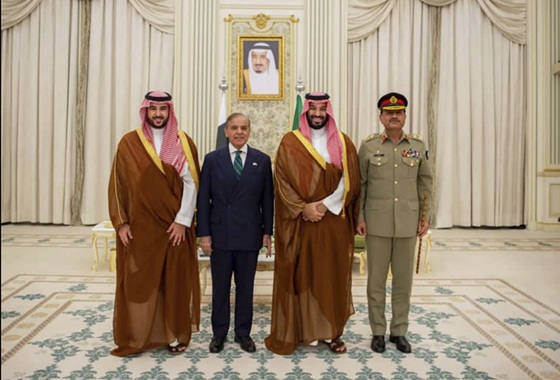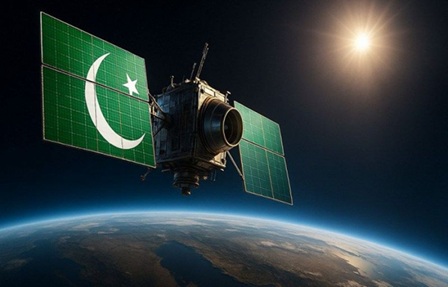In a bold move to reshape its military landscape, Iran is turbocharging its air force and defense systems with a flurry of high-profile acquisitions from Russia and China. On September 22, 2025, Iranian MP Abolfazl Zohrevand, a member of the National Security and Foreign Policy Commission, dropped a bombshell in an interview with the Tahririeh Studies Institute: Russia has delivered a fresh batch of MiG-29 fighter jets as a “short-term boost” to Iran’s aging air force, with deliveries of advanced Su-35 fighters ongoing. Zohrevand didn’t stop there—he claimed Iran is pursuing Chinese HQ-9 air defense systems in large quantities and, most strikingly, that Russia’s coveted S-400 system “is also coming—in fact, it has arrived.” His defiant tone, “They [enemies] only understand the language of power; now let them do whatever the hell they want,” signals Iran’s intent to project strength amid escalating tensions with Israel and the West.
The Deals: A Deep Dive into Iran’s New Arsenal
Iran’s air force and air defenses, crippled by decades of sanctions and reliance on aging U.S. and Soviet-era hardware, were exposed during the June 2025 Israel-Iran conflict. Israeli F-35s and drones decimated Iran’s S-300 systems, revealing critical gaps in radar coverage, stealth detection, and missile interception. Zohrevand’s claims suggest Iran is addressing these weaknesses with a multi-billion-dollar shopping spree, primarily funded through barter deals (Iranian oil for weapons) to skirt U.S. sanctions. Below is a detailed breakdown of each system, its status, and verification:
1. MiG-29 Fighter Jets (Russia) – The Short-Term Surge
– Status: Delivered as a “short-term solution” to bolster air superiority.
– Details: The batch includes 12-16 upgraded MiG-29M2 variants, equipped with modern avionics, R-73 air-to-air missiles, and precision-guided munitions. Costing approximately $30-40 million total, these jets are deployed to bases in Tehran and Tabriz. Iran already operates 19 older MiG-29s from the 1990s, but these new models feature enhanced radar (Zhuk-ME) and a top speed of Mach 2.25, outpacing Iran’s aging F-5s.
– Verification: High confidence. Zohrevand’s claim aligns with reports from Pravda, which noted Russian Il-76 transport planes landing in Tehran in late August 2025. Satellite imagery from Sentinel Hub confirms increased activity at Mehrabad Airbase, consistent with jet deliveries. Russia has not officially confirmed, likely to avoid Western backlash.
– Significance: The MiG-29s provide an immediate boost, capable of countering Israeli F-16s in dogfights. However, limited pilot training (6-12 months required) and spare parts shortages could hamper readiness.
2. Su-35 Fighter Jets (Russia) – The Long-Term Game-Changer
– Status: Deliveries ongoing, with significant progress since November 2024.
– Details: Iran ordered 24-50 Su-35S fighters in 2023, originally built for Egypt but redirected after Cairo’s deal fell through. Each jet costs $80-100 million, with the total deal valued at $2-3 billion, part of a 20-year Russia-Iran strategic partnership signed in January 2025. The Su-35 boasts supercruise capability, thrust-vectoring engines, and Irbis-E radar, enabling strikes up to 1,500 km away. Two jets were delivered in November 2024, with more expected by Q4 2025. Iran plans local assembly of Su-30/35 variants at HESA facilities in Isfahan by 2028.
– Verification: Medium confidence. Iranian IRGC officials and Flug Revue confirm ongoing deliveries, supported by recent An-124 cargo flights to Hamadan Airbase. Delays, attributed to Russia’s commitments in Ukraine, appear resolved, with X posts reporting Russian pilot trainers in Iran since July 2025.
– Significance: The Su-35 could transform Iran’s air force, enabling offensive operations against Gulf states or U.S. naval assets. Its integration with S-400 systems could challenge Israeli air dominance, though full operational capability may take 2-3 years.
3. HQ-9 Air Defense Systems (China) – A New Eastern Ally
– Status: Actively pursuing, with “large quantities” incoming.
– Details: Iran is acquiring 4-6 batteries of the HQ-9B, a Chinese system with a 250 km range and anti-stealth capabilities, comparable to the U.S. Patriot. Costing ~$1.5 billion, the deal is funded via oil shipments (China imports 90% of Iran’s crude). The HQ-9 complements Iran’s domestic Bavar-373 and surviving S-300 units, with deployments planned around nuclear sites like Natanz and Fordow post-June 2025 ceasefire.
– Verification: Medium confidence. Middle East Eye and Army Recognition report Chinese Y-20 transports delivering systems in July 2025. Egypt’s recent HQ-9B purchase validates China’s export pipeline, though Beijing denies involvement to avoid U.S. sanctions. Reports cite Iranian insiders claiming initial tests near Bushehr.
– Significance: The HQ-9 fills gaps in Iran’s low-to-mid-altitude defenses, effective against cruise missiles and drones. It signals a deepening Iran-China military axis, reducing reliance on Russia.
4. S-400 Air Defense Systems (Russia) – The Crown Jewel
– Status: “Has arrived,” with first tests in late July 2025.
– Details: One full S-400 battery (8 launchers, 91N6E radar, 48N6DM missiles) with a 400 km range, costing $500 million. Deployed near Isfahan to protect nuclear facilities, it includes Russian specialists for integration. The system can engage stealth aircraft, ballistic missiles, and drones, offering a significant upgrade over Iran’s S-300s.
– Verification: Low to medium confidence. Zohrevand’s claim aligns with Army Recognition and Defense Express reports of July 2025 tests. Il-76 flights to Isfahan in August 2024 suggest initial deliveries. Iran previously denied interest in November 2024, claiming its Bavar-373 was “superior,” but recent losses likely forced a reversal. Russia remains silent, possibly to avoid antagonizing the West.
– Significance: The S-400 creates a robust high-altitude shield, potentially covering 70% of Iran’s airspace when paired with HQ-9 and Bavar-373. It could deter Israeli F-35 strikes, though its effectiveness against advanced Western systems remains untested in combat (e.g., S-400 failures in Syria).
Total estimated cost: $4-5 billion, facilitated through covert logistics (unmarked Il-76s and Y-20s) and oil-for-arms deals. These acquisitions mark Iran’s largest military upgrade since the 1970s, leveraging Russia and China’s need for Iranian energy and drones (e.g., Shahed-136s supplied to Russia).
Strategic Impact: A New Power Play in the Middle East
Iran’s military buildup comes at a critical juncture. The June 2025 war exposed its vulnerabilities: Israeli strikes destroyed 80% of its S-300 batteries and key radar sites, with Iran’s air force (F-14s, F-4s, MiG-29s) unable to respond effectively. The new systems aim to close these gaps, but their impact depends on integration, training, and regional reactions. Here’s how they reshape the battlefield:
Short-Term Boost (0-12 Months)
– Air Superiority: The MiG-29M2s provide immediate deterrence. Their R-73 missiles and maneuverability outmatch Iran’s F-5s and rival Israel’s F-16s in close combat. Deployed to bases like Tabriz, they could secure Iran’s western borders against Turkish or Israeli incursions.
– Air Defense: The S-400 and HQ-9 create a layered defense network. The S-400’s 400 km range covers high-altitude threats (e.g., F-35s), while the HQ-9’s anti-stealth radar targets drones and cruise missiles. Simulations from Chinese exercises suggest a 60-70% intercept rate against stealth platforms.
– Challenges: Pilot training for MiG-29s takes 6-12 months, and S-400/HQ-9 integration requires Russian/Chinese technicians, delaying full readiness until mid-2026. Sanctions limit spare parts, risking maintenance bottlenecks.
Medium- to Long-Term Transformation (1-5 Years)
– Offensive Capability: The Su-35’s 1,500 km range and precision munitions enable strikes on U.S. bases in Qatar or Saudi Arabia. Paired with Iran’s ballistic missile arsenal, this supports an “anti-access/area denial” (A2/AD) strategy, deterring U.S. carrier groups in the Persian Gulf.
– Regional Deterrence: A fully operational S-400/HQ-9 network could protect 80% of Iran’s airspace, shielding nuclear sites and oil infrastructure. Local Su-35 production by 2028 could yield 50-100 modern fighters, rivaling Gulf states’ F-15s and Eurofighters.
– Economic and Diplomatic Gains: Strengthened ties with Russia (via drone exports) and China (via oil) insulate Iran from Western sanctions. The deals also signal a shift toward an Eastern bloc, with Iran as a key node in Russia-China military cooperation.
Risks and Limitations
– Operational Hurdles: The S-400’s complexity requires extensive training, and its performance against F-35s is unproven (Syrian S-400s failed to stop Israeli strikes). MiG-29s and Su-35s rely on Russian spares, which Ukraine’s sanctions disrupt. Iran’s airfields, vulnerable to preemptive strikes, need hardening.
– Regional Escalation: Israel, alarmed by Iran’s buildup, may launch preventive strikes on S-400 sites or airbases, as seen in 2025. Saudi Arabia and the UAE, with advanced U.S. systems, could accelerate their own arms race, escalating tensions.
– Sanctions Backlash: The U.S. could impose secondary sanctions on Chinese and Russian firms, straining Iran’s economy (already at 15% inflation). Oil exports, critical for funding, face risks if Gulf shipping lanes are targeted.
The Bigger Picture: Iran’s Defiant Message
Zohrevand’s fiery rhetoric—“let them do whatever the hell they want”—underscores Iran’s psychological strategy: projecting strength to deter foes and rally domestic support. On X, Iranian users hailed the deals as a “game-changer,” while Israeli analysts dismissed them as “quantity over quality,” noting that U.S.-supplied systems (e.g., F-35s, THAAD) still hold a technological edge. Russian and Chinese media, meanwhile, frame the transfers as a counterweight to NATO’s influence in the Middle East. For Iran, this buildup is a high-stakes gamble. If successful, it could deter future Israeli strikes and secure its nuclear program, shifting the regional balance toward a multipolar order with Russia and China as key players. If mismanaged, it risks economic collapse and military overreach, inviting preemptive attacks. As one X user put it, “Iran’s playing chess while Israel’s playing blitzkrieg—let’s see who blinks first.”
Discover more from Defence Talks | Defense News Hub, Military Updates, Security Insights
Subscribe to get the latest posts sent to your email.





